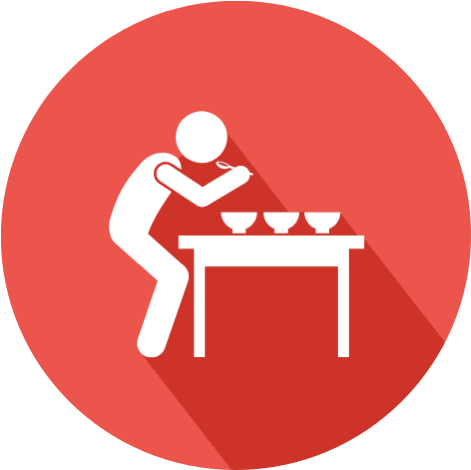'Would you like a coffee with that?' How Buyers Spend Almost Double When Drinking Coffee or Tea Before Purchase
Relevant topics Archive, Conversion
It’s early morning and you’re having your first coffee. Not too strong, not too weak. Just as you like it. You feel energized. Ten minutes later you’re on your laptop checking your emails and your social media. You decide to look at your Amazon account and see if your favourite coffee table is still available. Yes, it is, and it now includes free shipping! Add to cart. You’re now recommended luxury scented candles to match the table design. As well as beautiful decor items such as a chic lamp, a stylish vase and a set of artificial plants in pots that are way too expensive (even if water-wise)! Not a planned shopping spree, but you feel compelled to get them all. OK, done! Just four days until they’re shipped!
Wait, how did this happen? Did your coffee have anything to do with it? And if so, is coffee capable of making me shop more every time I have a cup of it?
A comprehensive field and lab research across various markets proved that caffeine consumption leads to increased impulse buying. That means more items purchased and higher overall spending, but mostly for high hedonic products - those that bring us fun, pleasure and excitement (Khan et al., 2004). Both physical and online stores that sell direct to consumers were experimented on, therefore the marketing implications are significant to both environments. They do come with terms and conditions, of course! After all, we’re dealing with people and human behaviour.
Caffeine is not present just in coffee. It’s estimated 85% of Americans consume at least one caffeinated beverage every day (Mitchell et al. 2014). Their primary source of caffeine intake is coffee, followed by tea and soda. New York-based Drive Research agency identified that 3 in 4 Americans drink coffee every day and almost half of them drink 3 to 5 cups of coffee a day. More significantly, 32% of people purchase coffee from a coffee shop 1 to 3 days a week. This is largely proliferated by the amount of retailers having in-store coffee bars or offering complimentary caffeinated beverages. North and Latin America, the Caribbean, and Europe prefer to take their main boost of caffeine from coffee and soda. Africa and Asia prefer tea and soda in this respect.
Caffeine and Purchase Behavior
Why even consider the effects of caffeine on purchase behavior? It’s important in marketing because caffeine is consumed daily worldwide through coffee, tea, soda, and energy drinks. It is also one of the most powerful, legally and widely available, psychoactive stimulants.
Extensive research shows that caffeine affects activity in our brain and nervous system. It also increases the circulation of chemicals such as cortisol and adrenaline. Thus, caffeine has the ability to excite both the mind and the body when dopamine is released in the brain's prefrontal cortex. Unlike amphetamine or cocaine, caffeine is a ‘psychomotor stimulant’, it implies a behavioral response to specific stimuli in our environment. In terms of shopping, it can apply to both a brick-and-mortar store and an online shop.
The effect on the body depends on the amount of caffeine consumed. At low doses (around 25–50 mg) caffeine reduces anxiety, boosts energetic arousal and cortisol levels. People feel active, less sleepy, and excited, a momentary euphoria. It happens quite rapidly after consumption and it can last for hours. At high doses, a tense energetic arousal takes place, which means people tend to be more anxious, nervous or jittery. You would usually need to consume more than 200 mg of caffeine for this effect to take place.
This excitement linked to caffeine-induced [energetic] alertness fosters impulsive buying tendencies. Our self-control weakens. It can result in buying more items and spending more money after consuming caffeinated beverages. I’m sure it happened to a lot of us, but we were probably not aware it was that cup of coffee that got us!
The effect doesn’t seem to work with any type of product. Generally, we are prone to impulse buying in high-hedonic product categories (Kushwaha & Shankar, 2013). After consuming coffee or similar caffeinated beverages, we tend to overspend on hedonic goods (like perfumes, flowers, luxury watches, sports cars, luxury vacations and more).
But let’s not forget about items that bring us immediate pleasure. Think of buttery, salty popcorn or chocolate candy. Actually, our perception of hedonic products can in itself be influenced by the caffeine-induced excitement. In turn, it motivates the consumption of hedonic products.
Marketing Implications
A series of studies were conducted at retail stores in France and Spain, as well as in controlled lab settings in the US and France. They showed caffeine intake before purchase increased the number of items purchased and resulted in a higher spending across a variety of hedonic products.
In the retail stores, people were offered a shot of espresso right before shopping. In the lab, participants drank either coffee or caffeinated tea before being presented with a product choice from the Amazon buying platform.
When compared to those who were offered non-caffeinated drinks or plain water, people who consumed the caffeinated drinks:
- spent almost double on their purchases ( 27.48 vs 14.82)
- bought on average 50% more items (1.50 vs 1.07)
- spent more or bought more items in the high-hedonic product categories (minimal impact on low-hedonic, utilitarian products, which tend to be rational, planned purchases, like storage boxes, cookware or notepads and pens.)
- felt the strongest effects of caffeine on their spending if their daily consumption of coffee was low (2 or less; if you are already a heavy coffee drinker, this might not work for you. Nothing exciting about the 3rd, 4th or 5th cup of coffee, right? I should know!)
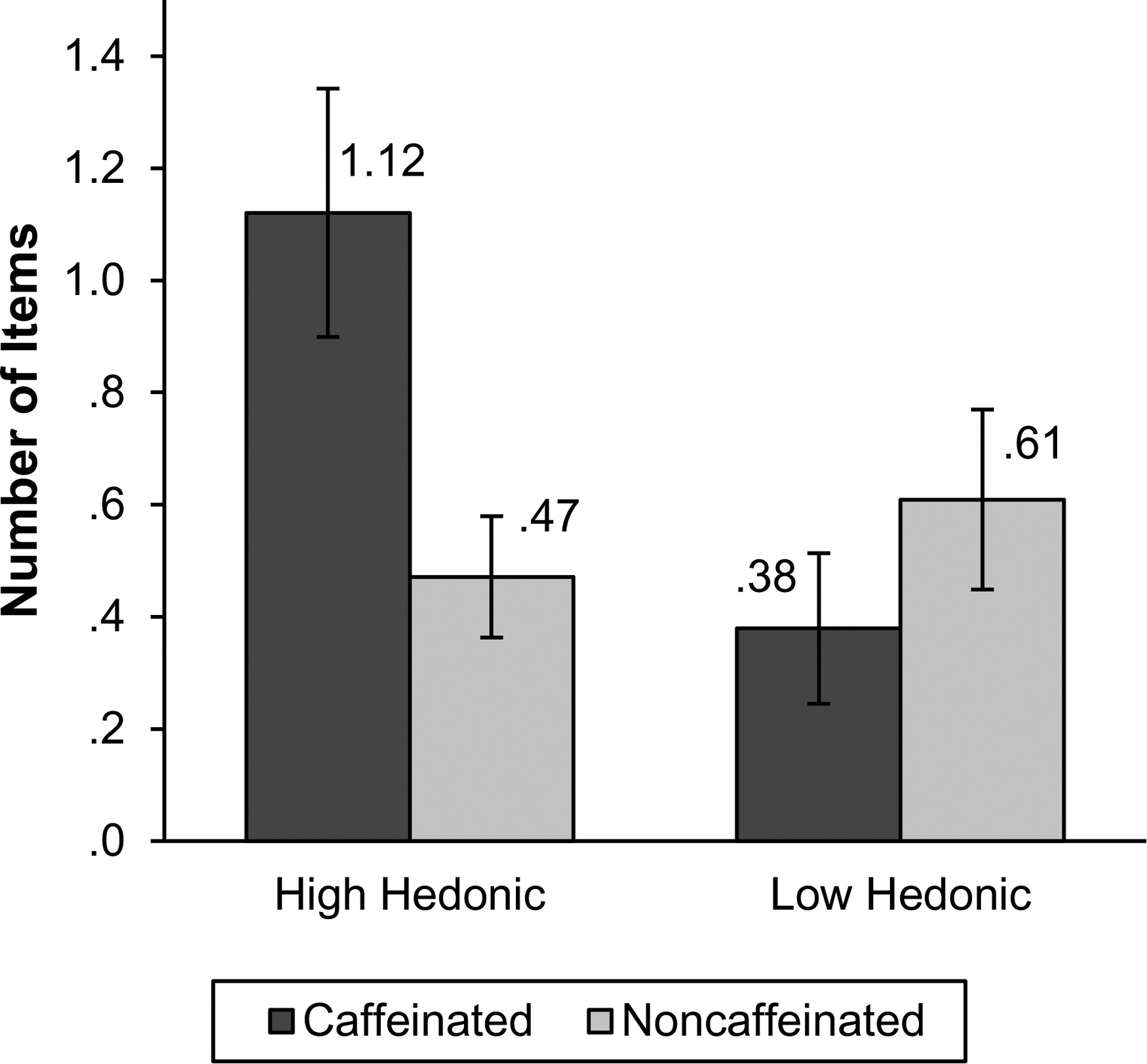
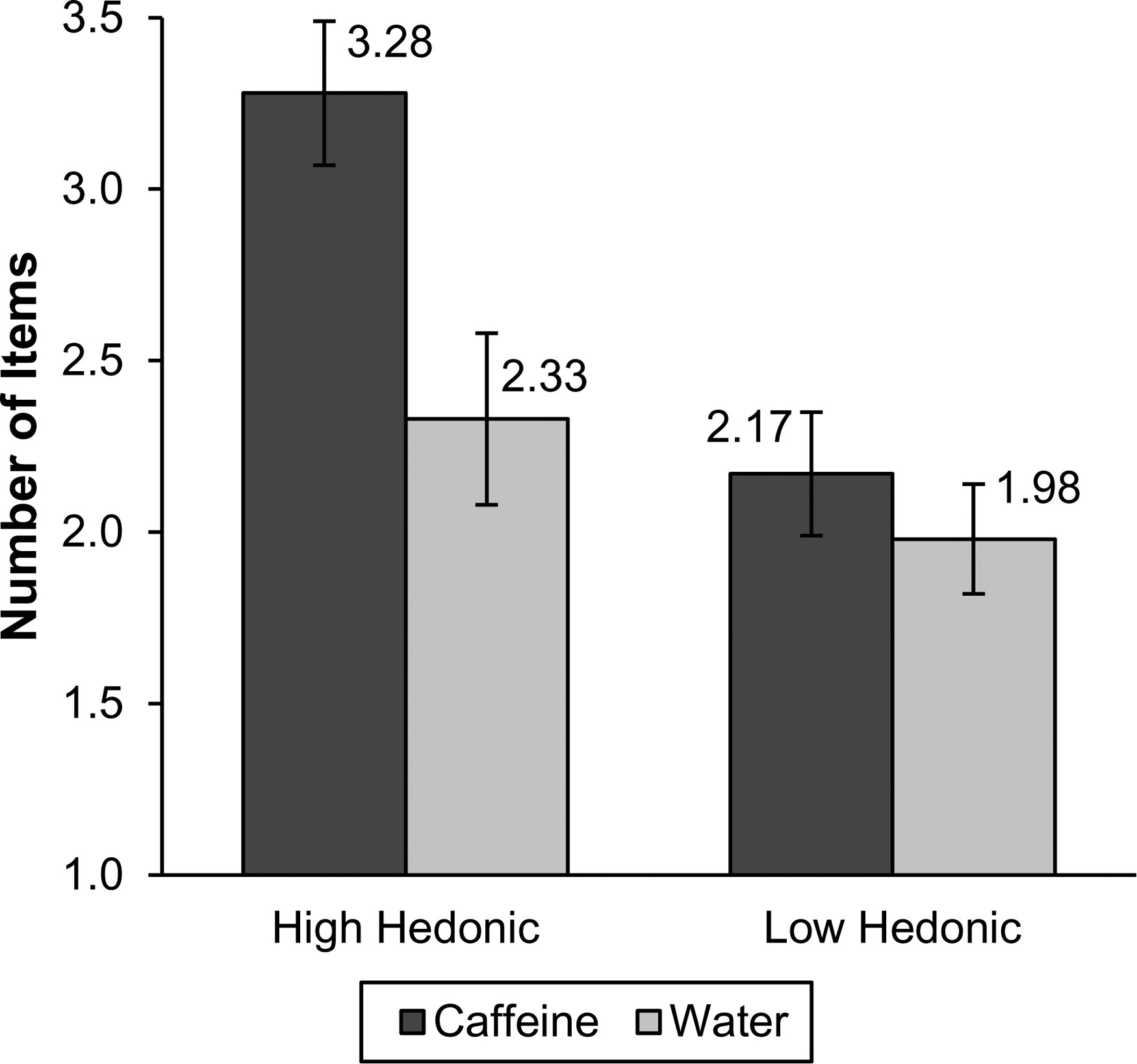
In the lab experiments, participants (students) were also asked to assign high and low hedonic status to a list of ‘relaxing gifts’ from Amazon (see image below) and then choose how many items they would buy. The caffeinated beverage condition (both coffee and tea used in research) resulted in a higher number of items purchased per receipt (.91 units) compared to the decaffeinated beverage (.43) and the water condition (.5).
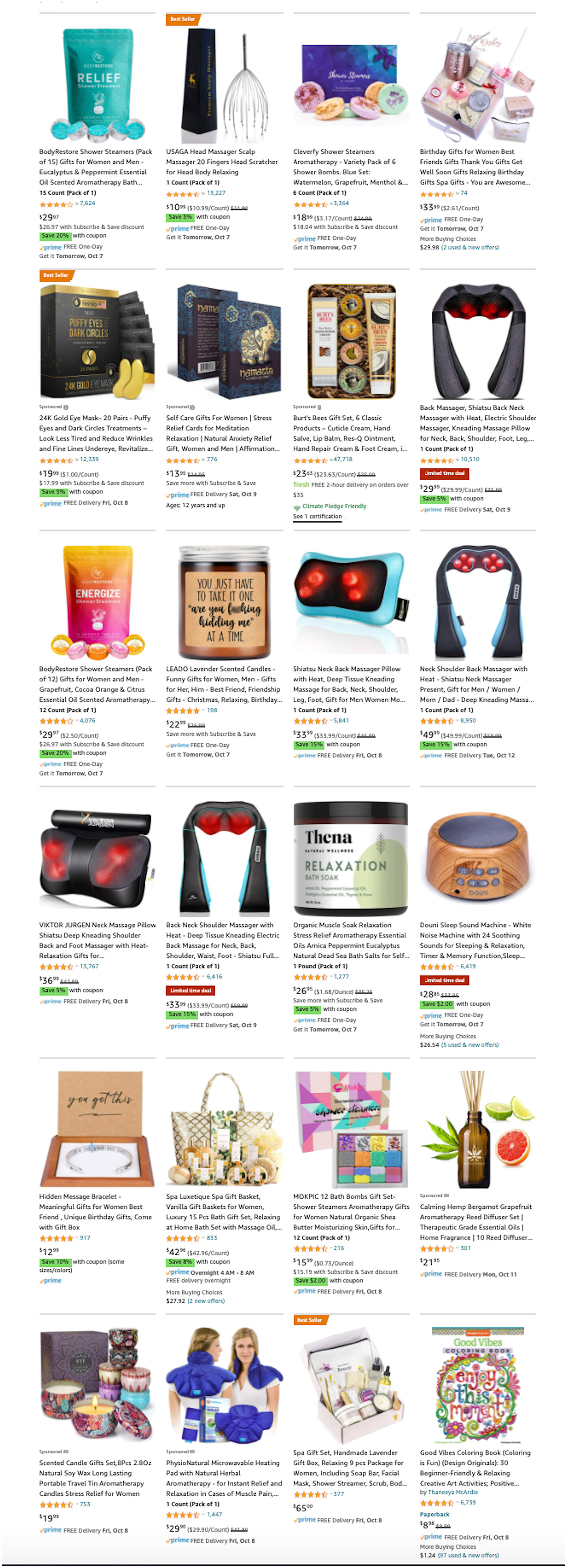
There are retailers and brands already capitalising on the cognitive and behavioral effect of caffeine intake around shopping. Many Target and Barnes & Noble stores have Starbucks outlets on-site, and stores such as Nordstrom and Polo Ralph Lauren have in-house coffee bars.
In fact, in 2019, Ralph Lauren staged a relaxed, accessible fashion show in an expanded version of their coffee shop in their women’s store on Madison Avenue, NY. The brand was aiming for a younger customer, so they showcased the latest collection while guests slid into banquettes and sipped coffee. Almost everything was available for sale immediately after, at the store and online.
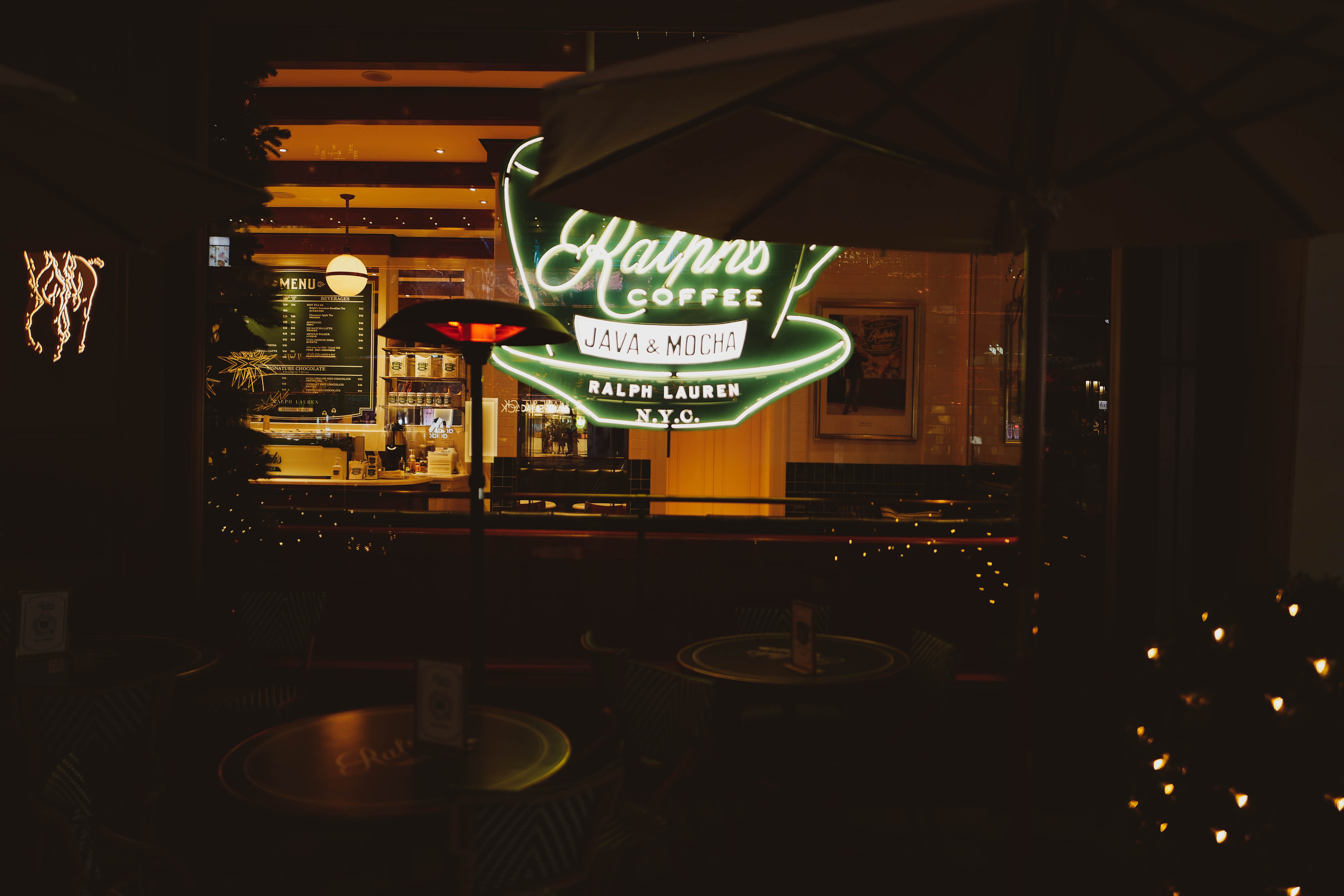
Mercedes-Benz also equips their showroom and service centers with exclusive coffee bars, in line with their unique luxury experience marketed at a premium clientele. It’s called the “Mercedes Me”, a car dealership concept based on a “Bistro-Bar-Lounge-Showroom” in which coffee is served complimentary to customers. According to Mercedes's marketing managers, this particular showroom concept notably increased sales (Pander 2014). It can’t be proven that caffeine consumption alone led to this, but it is potentially a contributing factor.
Take Home points
As the effects of caffeine intake on increased spending are stronger for high-hedonic products, this may be a great opportunity for you, if you are a retailer, to adjust your product mix (i.e., the ratio and type of hedonic products to push to the front of their offer). It obviously depends on whether your customers have the opportunity to consume caffeine (e.g., at an in-store coffee bar) before shopping.
Consider also the ethical dimension of the research insights. Consumers’ caffeine intake clearly benefits retailers. Consumers should, however, be made aware of the unintended consequences of consuming caffeine, and should be able to make their own decision once the potential effects of caffeine on spending are openly highlighted. Financial distress led by uncontrolled impulsive buying, especially in the era of buy-now, pay-later, is something that as marketers, we don’t want to contribute to.
There are more unknown variables that might influence the spending patterns of people consuming caffeinated drinks before shopping. They need to be pondered upon carefully and more empirical research would benefit marketers:
- Would just the scent of coffee, and not actually drinking it, have the same result on spending patterns?
- For online retailers, would promoting high hedonic products in the morning, after most people have their first coffee, make a difference to sales volume or product choice?
- Since heavy coffee drinkers experience tense arousal (so nervousness, agitation), is it possible that a very high amount of caffeine consumption before shopping can lead to lower spending instead?
- Could a combination of caffeine intake and store ambient elements (e.g., loud music, different ambient scents) backfire in terms of purchases?
- What if coffee is consumed with food, e.g. chocolate or cake? Would the effect change considerably in terms of shopping behavior?
With popular beverages worldwide having a significant caffeine content, it would also be relevant to understand how the intake of caffeine can affect various marketing-related outcomes besides sales volume or purchase value. For example, the perception of marketing messages.
This experiment was conducted for the business-to-consumer (B2C) industry, specifically for fun and exciting physical products in a retail environment. There's nothing stopping you to give it a try for your service-based or B2B (Business to Business) venture. You could actually create your own experiment. This is what marketing is all about: testing and adjusting. Just remember, as with any marketing tactic, the actual product or service quality and after-sale experience are usually more important than the initial attraction strategy. Your marketing promise must be matched through the entire customer journey to achieve the desired amount of sales.
Further Reading
-
Beyond the Taste Buds: How Packaging Shapes Our Perception
If you're a food lover, chances are you've been lured by a mouth-watering package design at least once. But did you know that the shape and color of packaging can also affect your perception of taste? The days where the sole purpose of a product’s packaging was to protect its content are over. As visual creatures, we often base our purchase decisions on the visual appearance of products. That’s why packaging plays a key role in setting product-related expectations. Packaging design can communicate a product's quality, value, and taste, which can influence consumers' purchasing decisions.
But how exactly can packaging design influence our taste expectations of food and beverage products?

